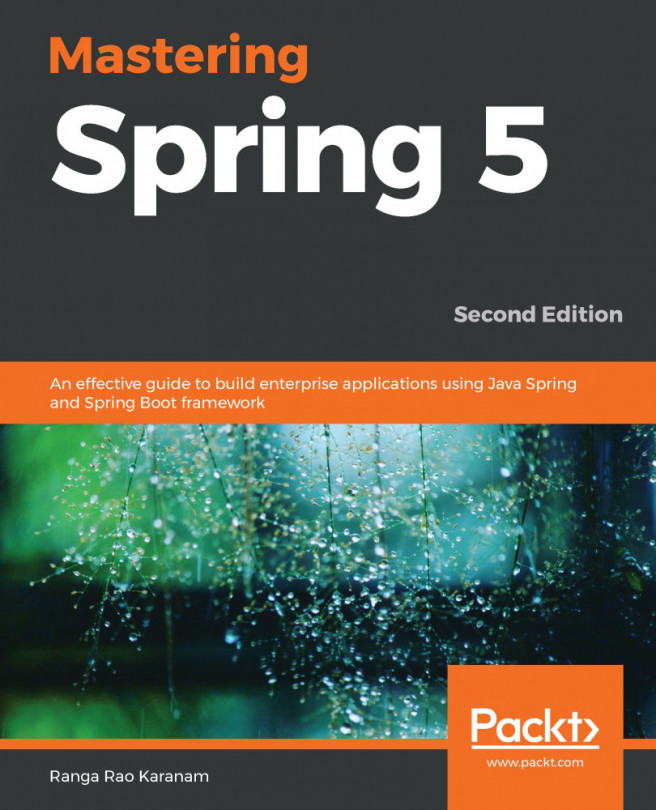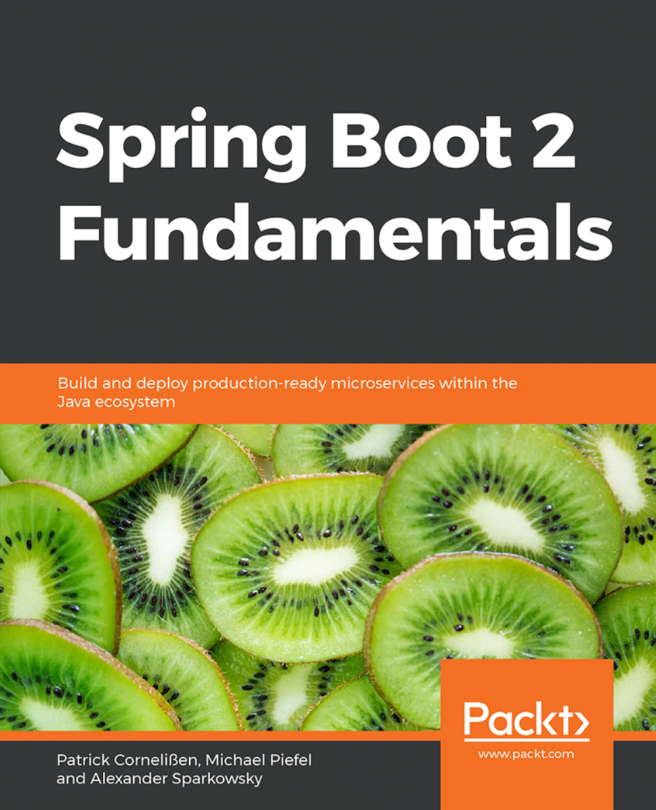Spring Initializr
Do you want to auto-generate Spring Boot projects? Do you want to quickly get started with developing your application? Spring Initializr is the answer.
Spring Initializr is hosted at http://start.spring.io. The following screenshot shows how the website looks:
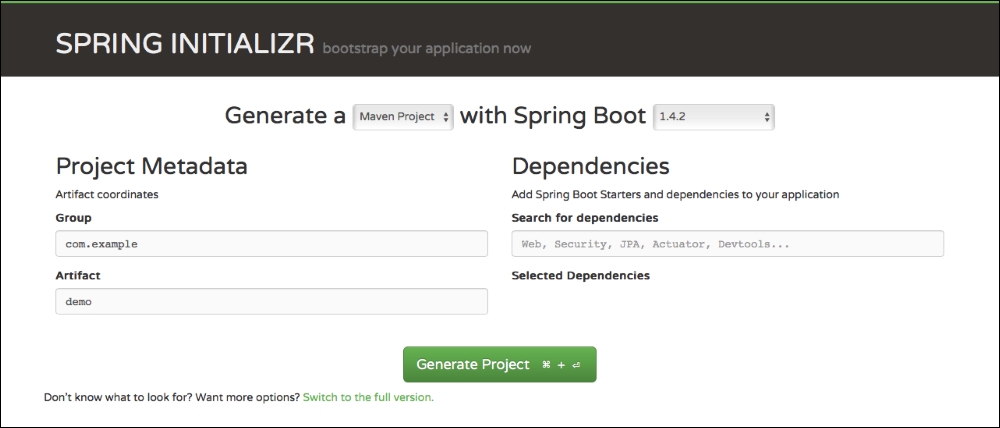
Spring Initializr provides a lot of flexibility in creating projects. You have options to do the following:
- Choose your build tool: Maven or Gradle.
- Choose the Spring Boot version you want to use.
- Configure a
Group IDandArtifact IDfor your component. - Choose the starters (dependencies) that you would want for your project. You can click on the link at the bottom of the screen,
Switch to the full version, to see all the starter projects you can choose from. - Choose how to package your component: JAR or WAR.
- Choose the Java version you want to use.
- Choose the JVM language you want to use.
The following screenshot shows some of the options Spring Initializr provides when you expand (click on the link) to the full version:
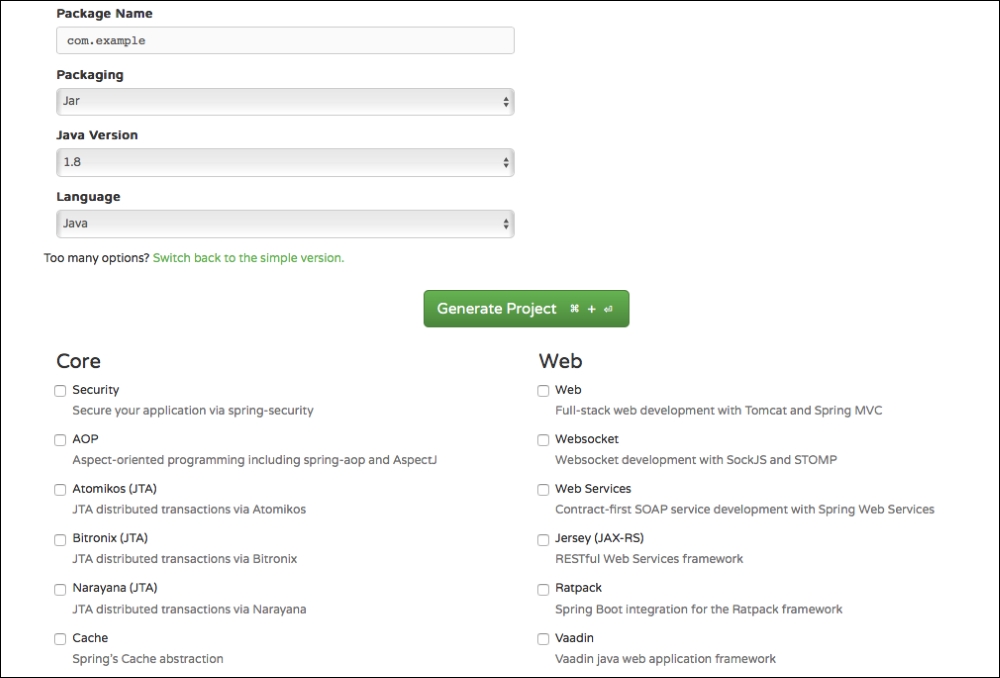
Creating Your First Spring Initializr Project
We will use the full version and enter the values, as follows:
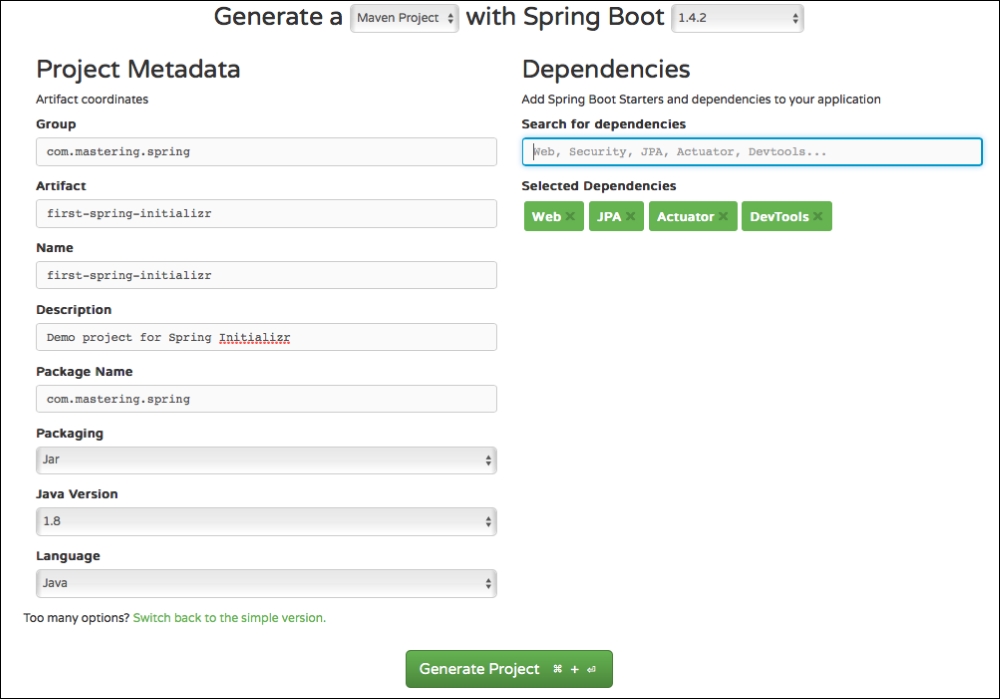
Things to note are as follows:
Build tool:MavenSpring Boot version: Choose the latest availableGroup:com.mastering.springArtifact:first-spring-initializrSelected dependencies: ChooseWeb, JPA, Actuator and Dev Tools. Type in each one of these in the textbox and press Enter to choose them. We will learn more about Actuator and Dev Tools in the next sectionJava version:1.8
Go ahead and click on the Generate Project button. This will create a .zip file and you can download it to your computer.
The following screenshot shows the structure of the project created:
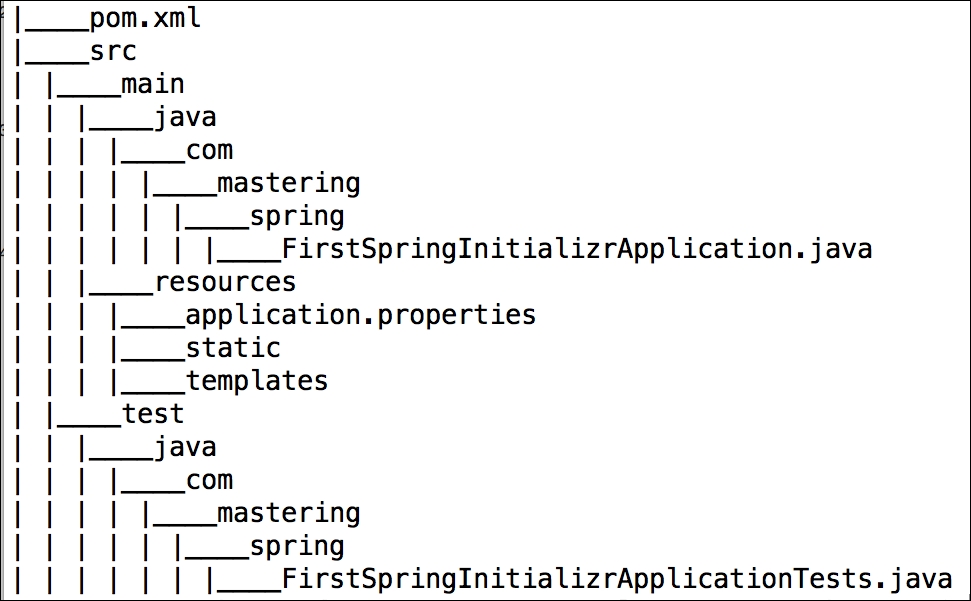
We will now import this project into your IDE. In Eclipse, you can perform the following steps:
- Launch Eclipse.
- Navigate to File | Import.
- Choose the existing Maven projects.
- Browse and select the folder that is the root of the Maven project (the one containing the
pom.xmlfile). - Proceed with the defaults and click on Finish
.
This will import the project into Eclipse. The following screenshot shows the structure of the project in Eclipse:
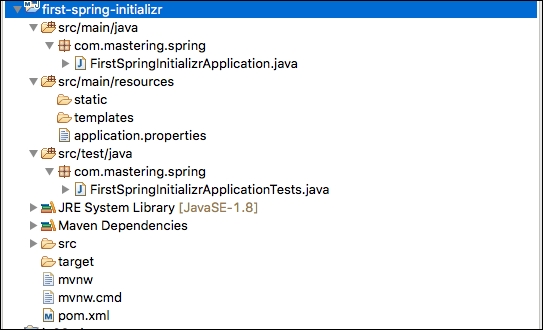
Let's look at some of the important files from the generated project.
pom.xml
The following snippet shows the dependencies that are declared:
<dependencies> <dependency> <groupId>org.springframework.boot</groupId> <artifactId>spring-boot-starter-web</artifactId> </dependency> <dependency> <groupId>org.springframework.boot</groupId> <artifactId>spring-boot-starter-data-jpa</artifactId> </dependency> <dependency> <groupId>org.springframework.boot</groupId> <artifactId>spring-boot-starter-actuator</artifactId> </dependency> <dependency> <groupId>org.springframework.boot</groupId> <artifactId>spring-boot-devtools</artifactId> <scope>runtime</scope> </dependency> <dependency> <groupId>org.springframework.boot</groupId> <artifactId>spring-boot-starter-test</artifactId> <scope>test</scope> </dependency> </dependencies>
A few other important observations are as follows:
- The packaging for this component is
.jar org.springframework.boot:spring-boot-starter-parentis declared as the parent POM<java.version>1.8</java.version>: The Java version is 1.8- Spring Boot Maven Plugin (
org.springframework.boot:spring-boot-maven-plugin) is configured as a plugin
FirstSpringInitializrApplication.java Class
FirstSpringInitializrApplication.java is the launcher for Spring Boot:
package com.mastering.spring;
import org.springframework.boot.SpringApplication;
import org.springframework.boot.autoconfigure
.SpringBootApplication;
@SpringBootApplication
public class FirstSpringInitializrApplication {
public static void main(String[] args) {
SpringApplication.run(FirstSpringInitializrApplication.class,
args);
}
}FirstSpringInitializrApplicationTests Class
FirstSpringInitializrApplicationTests contains the basic context that can be used to start writing the tests as we start developing the application:
package com.mastering.spring;
import org.junit.Test;
import org.junit.runner.RunWith;
import org.springframework.boot.test.context.SpringBootTest;
import org.springframework.test.context.junit4.SpringRunner;
@RunWith(SpringRunner.class)
@SpringBootTest
public class FirstSpringInitializrApplicationTests {
@Test
public void contextLoads() {
}
}
























































